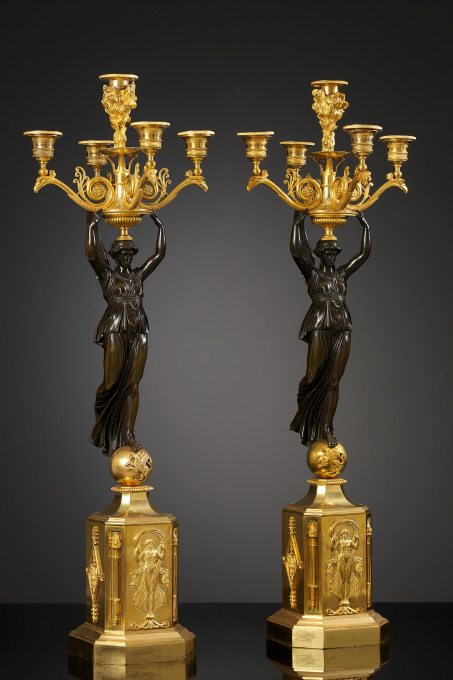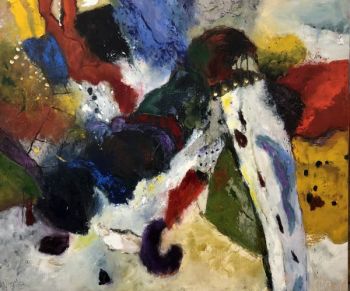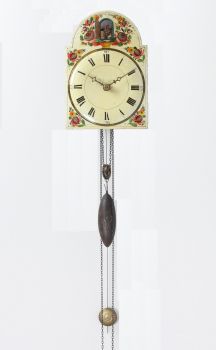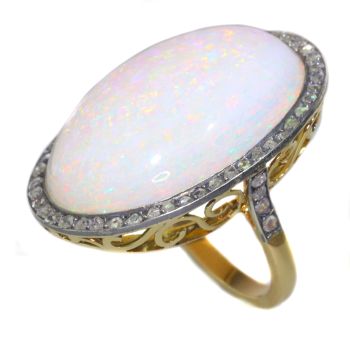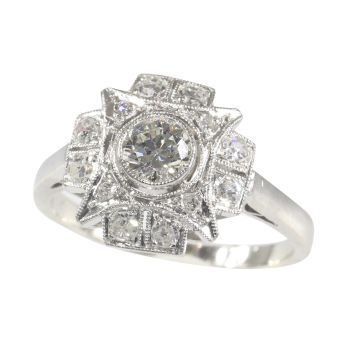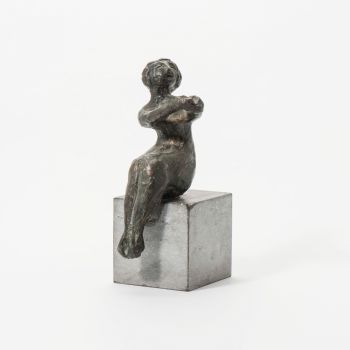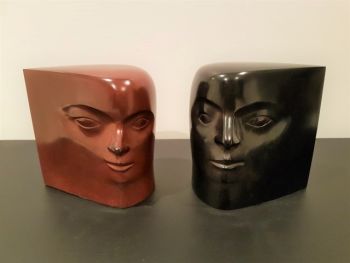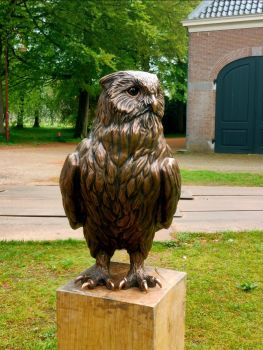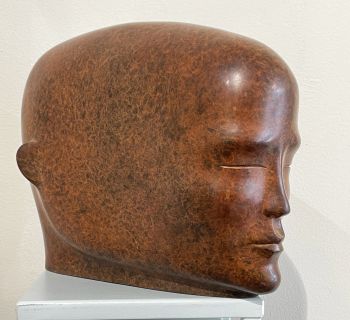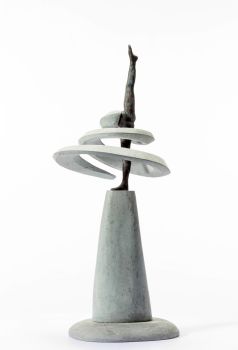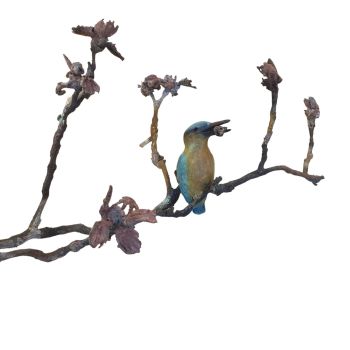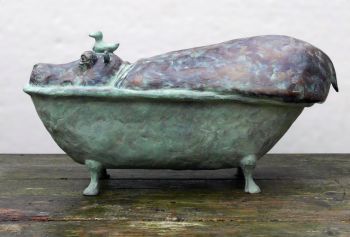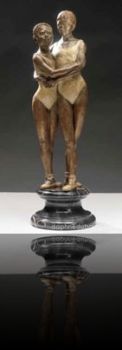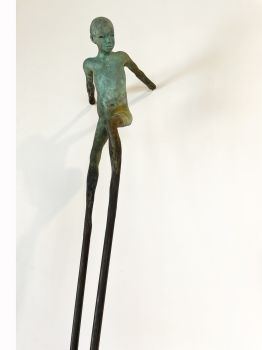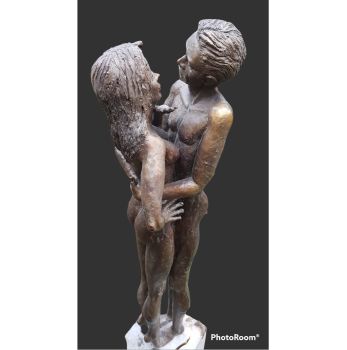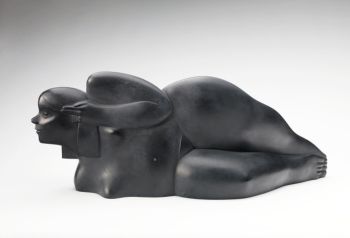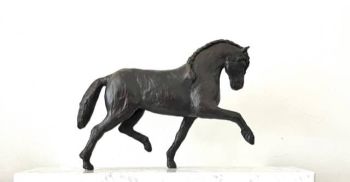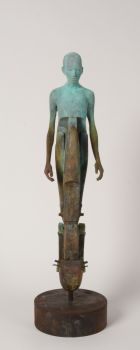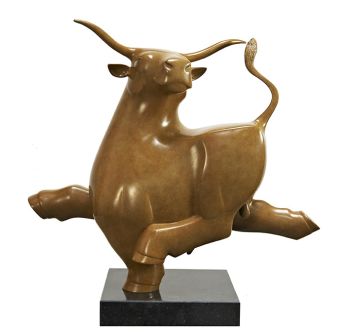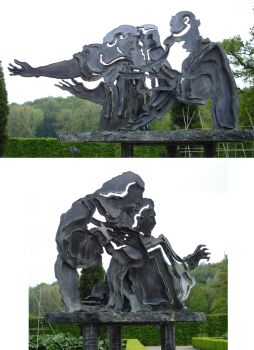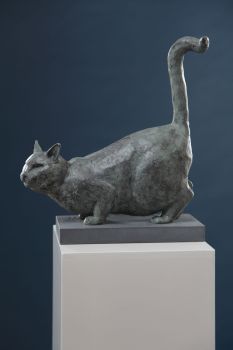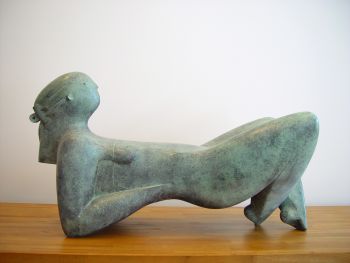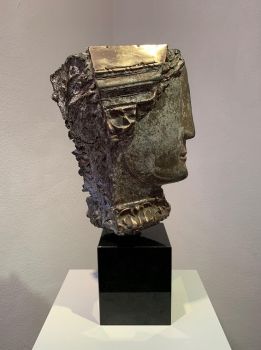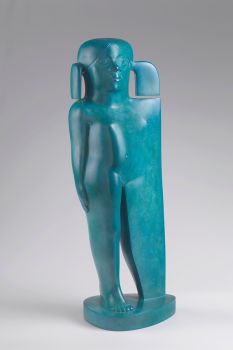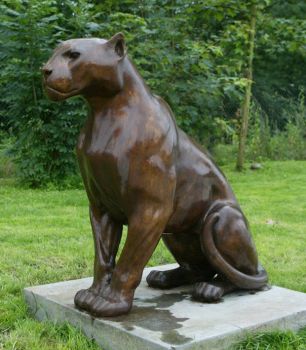A pair of Empire Candelabra 1810
Unknown artist
BronzeMetal
75 cm
Currently unavailable via Gallerease
- About the artworkA magnificent pair of Empire gilt and patinated bronze five-light candelabra each with the stem formed as an ancient winged priestess with her hands held aloft as she supports the vase on her head. This vase supports four branches that end in birds heads with each a candleholder on top. The priestess standing on a gilt bronze globe with a representation of Pegasus rearing on hind legs. The globe rests on a square truncated plinth mounted with Karyathides and diamond shaped ornamented cartouches with Imperial eagles in the centre. The truncated corners are ornamented with torches.
These sumptuous candelabra are identical in design to a known pair in the former Palais de Tuilleries. The overall design of the candelabra embodies the spirit of the Empire. The priestesses refer to the goût Égyptienne, as inspired by Napoleons Egyptian campaigns. The eagles pay reference to Napoleon’s reign and the representation of Pegasus symbolyses fame. The globe is symbol of the sovereignety over the world.
Although the maker is unknown and none of the above examples bear a maker's mark their design compares with other candelabra and bronzes made by two of the Empire's most celebrated bronziers namely Pierre-Philippe Thomire (1751-1843).
Marie-France Dupuy-Baylet, L'Heure, Le Feu, La Lumière, Les Bronzes du Mobilier National 1800-1870, 2010, pp. 166-167 - About the artist
It might happen that an artist or maker is unknown.
Some works are not to be determined by whom it is made or it is made by (a group of) craftsmen. Examples are statues from the Ancient Time, furniture, mirroirs, or signatures that are not clear or readible but as well some works are not signed at all.
As well you can find the following description:
•“Attributed to ….” In their opinion probably a work by the artist, at least in part
•“Studio of ….” or “Workshop of” In their opinion a work executed in the studio or workshop of the artist, possibly under his supervision
•“Circle of ….” In their opinion a work of the period of the artist showing his influence, closely associated with the artist but not necessarily his pupil
•“Style of ….” or “Follower of ….” In their opinion a work executed in the artist’s style but not necessarily by a pupil; may be contemporary or nearly contemporary
•“Manner of ….” In their opinion a work in the style of the artist but of a later date
•“After ….” In their opinion a copy (of any date) of a work of the artist
•“Signed…”, “Dated….” or “Inscribed” In their opinion the work has been signed/dated/inscribed by the artist. The addition of a question mark indicates an element of doubt
•"With signature ….”, “With date ….”, “With inscription….” or “Bears signature/date/inscription” in their opinion the signature/ date/ inscription has been added by someone other than the artist
Artwork details
Related artworks
- 1 - 4 / 12
Unknown artist
Set Franse Empire Pendules / Empire Lectura penduleearly 19th
Price on requestKuipers Kunst & Antiek
Unknown artist
18th Century Diamond Bracelet with 2000-year-old Intaglios1790
€ 23.000Adin Fine Antique Jewellery
 Curated by
Curated byDanny Bree
1 - 4 / 15Unknown artist
A RARE LARGE JAPANESE LACQUERED LEATHER TELESCOPE1750 - 1800
Price on requestZebregs & Röell - Fine Art - Antiques
1 - 4 / 24- 1 - 4 / 24

